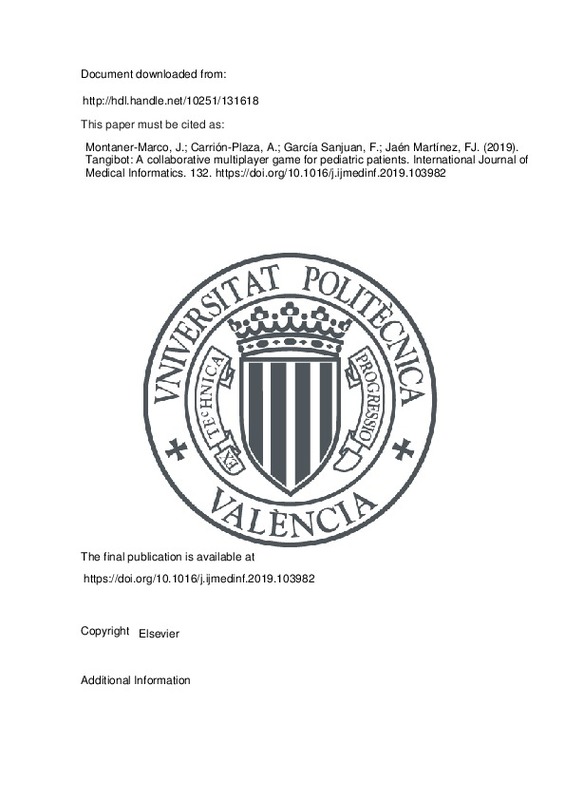JavaScript is disabled for your browser. Some features of this site may not work without it.
Buscar en RiuNet
Listar
Mi cuenta
Estadísticas
Ayuda RiuNet
Admin. UPV
Tangibot: A collaborative multiplayer game for pediatric patients
Mostrar el registro completo del ítem
Montaner-Marco, J.; Carrión-Plaza, A.; García Sanjuan, F.; Jaén Martínez, FJ. (2019). Tangibot: A collaborative multiplayer game for pediatric patients. International Journal of Medical Informatics. 132. https://doi.org/10.1016/j.ijmedinf.2019.103982
Por favor, use este identificador para citar o enlazar este ítem: http://hdl.handle.net/10251/131618
Ficheros en el ítem
Metadatos del ítem
| Título: | Tangibot: A collaborative multiplayer game for pediatric patients | |
| Autor: | Carrión-Plaza, Alicia | |
| Entidad UPV: |
|
|
| Fecha difusión: |
|
|
| Resumen: |
[EN] Background
Previous research has studied the effects of games in pediatric wards, but none of it has focused on the impact of the hospital¿s school staff on the psychosocial state of the children nor on the gameplay ...[+]
|
|
| Palabras clave: |
|
|
| Derechos de uso: | Reserva de todos los derechos | |
| Fuente: |
|
|
| DOI: |
|
|
| Editorial: |
|
|
| Versión del editor: | https://doi.org/10.1016/j.ijmedinf.2019.103982 | |
| Código del Proyecto: |
|
|
| Agradecimientos: |
This work is funded by the European Development Regional Fund (EDRF-FEDER) and supported by Spanish MINECO with Project TIN2014-60077-R-AR. The work of Jorge Montaner is supported by a national grant from the Spanish ...[+]
|
|
| Tipo: |
|







![[Cerrado]](/themes/UPV/images/candado.png)


